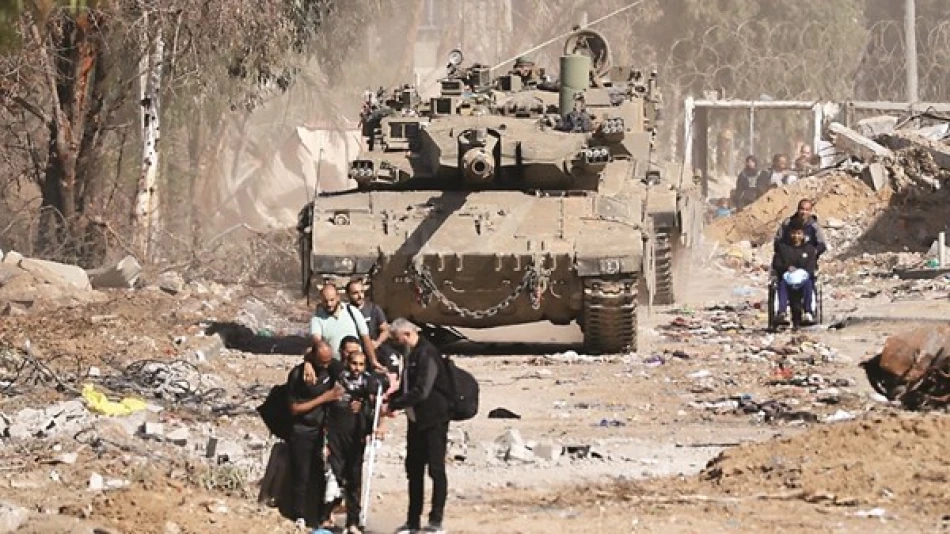
Israel Approves Plans for Gaza Offensive: Bracing for Escalating Tensions in the Region
Israel Escalates Gaza Threats as Ceasefire Negotiations Resume
Israeli Defense Minister Israel Katz has threatened to destroy Gaza City entirely unless Hamas disarms and releases all remaining hostages, even as Prime Minister Benjamin Netanyahu announced the start of new negotiations for prisoner releases. The ultimatum represents a dramatic escalation in rhetoric and military planning, with Katz approving army plans that include "intensive fire" and mass displacement of over one million Palestinian civilians.
Military Strategy Shifts to Urban Warfare
Katz officially endorsed what amounts to a scorched-earth policy for Gaza City, stating that "the gates of hell will soon open on Gaza" until Hamas accepts Israel's conditions. The defense minister explicitly referenced the destruction of Rafah and Beit Hanoun as templates for Gaza City's potential fate, signaling a systematic approach to urban demolition that has characterized Israel's military operations throughout the conflict.
The approved military plans involve intensive bombardment, civilian evacuation orders, and ground maneuvers designed to achieve what Israeli officials call "Hamas's defeat in Gaza." This strategy mirrors tactics used in other Gaza municipalities, where entire neighborhoods have been reduced to rubble over recent months.
Diplomatic Contradiction Emerges
The military escalation creates a stark contradiction with Netanyahu's simultaneous announcement of renewed hostage negotiations. The Prime Minister provided no details about the scope or framework of these talks, stating only that negotiations would proceed alongside military operations to capture Gaza City.
This dual approach—negotiating while threatening total destruction—reflects Israel's attempt to leverage maximum military pressure to extract concessions. However, historical precedent suggests such tactics often complicate rather than facilitate diplomatic breakthroughs, as seen in previous Gaza conflicts where military escalation hardened positions on both sides.
International Warnings Mount
Multiple UN agencies issued joint warnings about the humanitarian catastrophe that would result from an assault on Gaza City. The Food and Agriculture Organization, UNICEF, World Food Programme, and World Health Organization highlighted the particular vulnerability of sick patients unable to evacuate, children, and disabled individuals.
These warnings come against the backdrop of confirmed famine conditions in Gaza, adding urgency to international concerns about civilian protection. The UN agencies' coordinated response suggests growing institutional alarm about Israel's military plans.
Immediate Violence Continues
Even as diplomatic and military planning intensified, immediate violence claimed at least 13 Palestinian lives in continued Israeli strikes on Gaza City. The casualties included entire families killed in attacks on displacement camps and schools serving as shelters, illustrating the civilian cost of ongoing operations.
A strike on a tent housing displaced persons killed a family of five, while separate attacks on residential areas and schools claimed additional lives. Israeli artillery targeted multiple Gaza City neighborhoods, suggesting preparatory operations for the larger offensive Katz has approved.
Strategic Implications
Israel's threat to completely destroy Gaza City represents a significant escalation that could reshape the conflict's trajectory. Unlike previous operations focused on specific military targets or infrastructure, the proposed campaign explicitly aims at urban destruction comparable to other demolished Gaza areas.
The success or failure of this approach will likely influence Israeli military doctrine for future urban conflicts and set precedents for international responses to siege warfare in densely populated areas. With over one million civilians at risk, the international community faces a critical test of its ability to prevent mass displacement and potential atrocities.
 Layla Al Mansoori
Layla Al Mansoori







